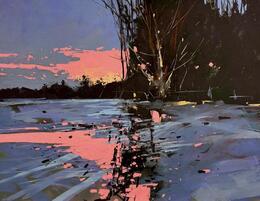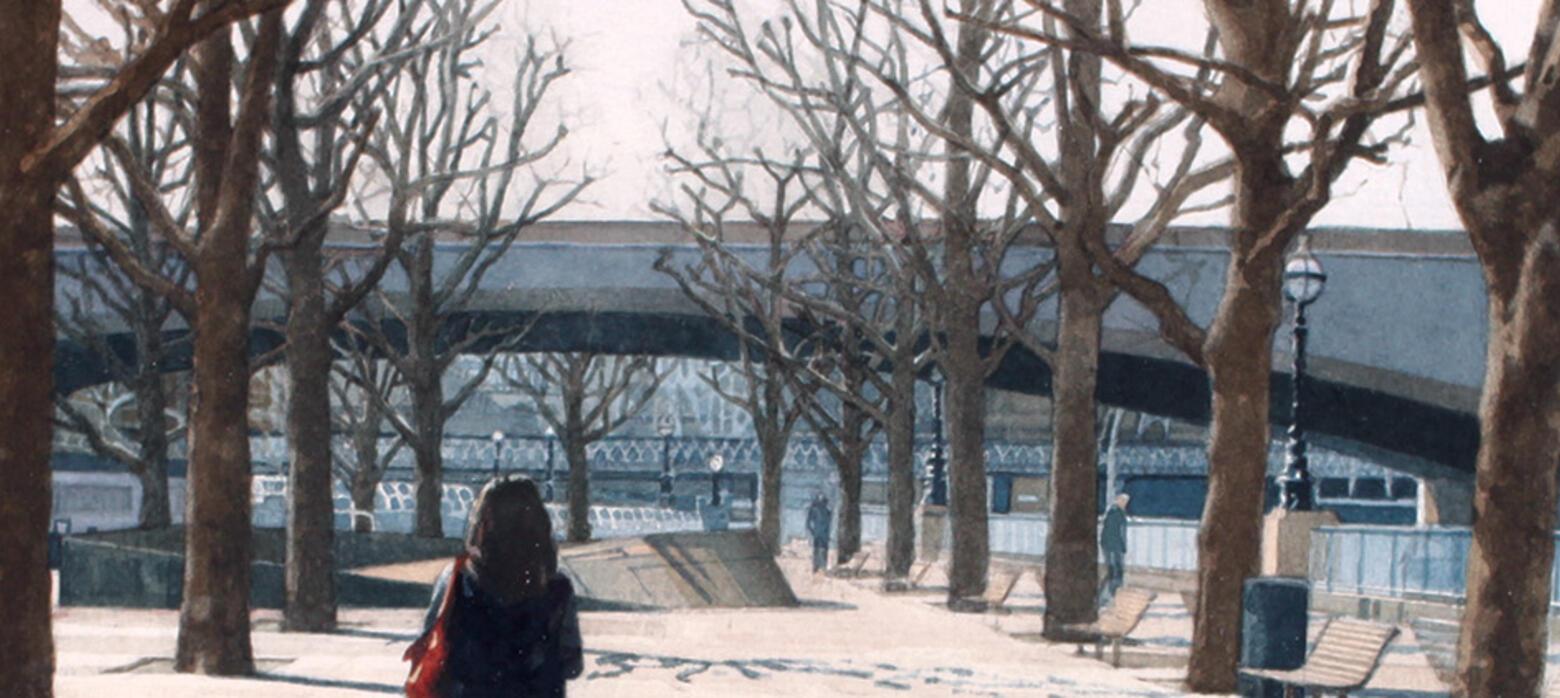History of Watercolours
The medium of watercolour has been particularly associated with England for several hundred years. However, its origins lie further back in the history of European painting. Pigments, consisting of earths or vegetable fibres ground to powder and bound with gum or egg, were in use in the Middle Ages. They were applied to vellum to adorn manuscripts, to depict religious and (later) secular scenes - as well as to enrich capital letters and ornament borders.
- By Andrew Wilton
The Artist Explorer was generously funded by Foyle Foundation.
Techniques
The usual practice was for the colour itself to be mixed with an opaque pigment such as lead white, which gave it a ‘body’ and great chromatic intensity. This made it ideal for decorative work, and as time passed its uses became less and less concerned with the devotional and were increasingly purely decorative. By the 17th century, although religious miniatures continued to be executed in watercolour or ‘body’ colour, the medium was becoming more associated with secular subjects such as landscape, or the decoration of fans. ‘Bodycolour’ was also known by the French term ‘gouache’.

Some artists at that time were beginning to use watercolour properly - that is, pigments floated in the transparent medium of water, which, instead of covering up the support, allowed it to shine through the washes of colour.
A white support, such as ivory, was used for miniature portraits. Miniatures were introduced from Germany under Henry VIII by Holbein, and brought to exquisite refinement by Nicholas Hilliard and others in the decades around 1600.
As paper manufacture became more sophisticated and incidental impurities and discolourations were eliminated, it became possible to use watercolour as the source of luminosity in a ‘tinted drawing’. The medium recommended itself particularly for use in landscapes, when the brightness of the sky must be given due emphasis.
Beginnings
The outstanding practitioners of this newly flexible medium in the 17th century were northern European. Netherlandish artists used it extensively for landscape subjects, and the eminently portable watercolour could be employed while travelling and used to record real places. Fan-painters and some decorative landscapists went on using gouache, but watercolour asserted itself as the natural medium of a burgeoning national school of topographical view-makers.

Topographical Watercolourists
These worked at the behest of travellers, collectors and landowners who wanted to have antiquarian discoveries, buildings they particularly admired, and their own property, celebrated in an accurate, modest form. Watercolour drawings could be kept in albums or portfolios; only the larger and more substantial pieces were framed and hung on walls.
But as the profession prospered, so its ambitions grew. With the founding of the Royal Academy of Arts in London in 1768, a hierarchy of the various branches of art became fixed. Painters in oil were ranked according to the ‘importance’ of their work; historical subjects were valued (at least in theory) more than portraits; landscapes and genre scenes came still lower down the scale. Watercolourists found themselves marginalised.
The Romantic Revolution
This state of affairs precipitated a revolution when, in the 1790s, several young artists set about reinventing watercolour as a medium that could compete on the Academy’s walls with oil, not only in richness of effect but in size and seriousness of subject matter.
By the end of the century Thomas Girtin and Joseph Mallord William Turner were producing large, powerful ‘watercolour paintings’, framed in substantial gilt frames, that made the ‘tinted drawing’ seem obsolete. They were influenced by such Continental watercolourists as Louis Ducros, who had been making large, richly coloured views for the Grand Tour market, but were also propelled by the spirit of Romanticism that galvanised painters and writers alike in the Britain of the Napoleonic Wars.

The 19th Century
Girtin died in 1802 but Turner went on inventing and revolutionising the medium of watercolour until his death in 1851. Inspired by their achievement, the watercolourists formed their own ‘academy’, the Society of Painters in Water-Colours, in 1803; and shortly afterwards other bodies with similar aims came into existence. Turner himself never belonged to them; he remained true to the Royal Academy all his life.
The example Turner and Girtin had set prompted a generation of masters: John Sell Cotman, David Cox, Peter de Wint and William Henry Hunt all evolved distinctive personal idioms in which they expressed the contemporary fascination with nature. Watercolour and gouache began to be used in combination for even more dramatic effects.
John Frederick Lewis perfected a miniature-like technique of breathtaking precision, anticipating the crisp detail of the Pre-Raphaelites. John Ruskin encouraged a new style, bred of his enthusiasm for both Turner and the Pre-Raphaelites, in which fine detail and broad atmospheric effects are married, most poetically in the work of the ‘Idyllists’, some of whom lived on into the 20th century.


The 20th Century and Beyond
Thanks to his endlessly original reinventions of the medium, Turner has remained an unavoidable influence on watercolourists. Another hero is Cotman, whose clean, spare designs and immaculately laid washes have appealed to the 20th century love of the abstract. Two of the 19th-century societies still flourish as the Royal Watercolour Society and the Royal Institute of Painters in Water Colours. In the wider world, a distinguished exponent of the medium is David Hockney, who has recently made a series of large portrait drawings in watercolour.
© Andrew Wilton 2009
Picture credits
Top to bottom:
J. M. W. Turner, The Great Falls of Reichenbach, © Trustees, Cecil Higgins Art Gallery, Bedford, England.
Thomas Girtin, Westminster and Lambeth, a drawing, © The Trustees of the British Museum.
Alfred William Hunt, 1830-1896. Tynemouth Pier Lighting the Lamps at Sundown. 1868. Watercolour, some bodycolour, gum and scraping out. 14 5/8 x 21 1/4in. (37.1 x 54cm). Yale Center for British Art, Paul Mellon Fun. B1980.3.
John Sell Cotman, Drop Gate, © The Trustees of the British Museum.
J. M. W. Turner, The Blue Rigi, Sunrise, © Tate, London 2009.

